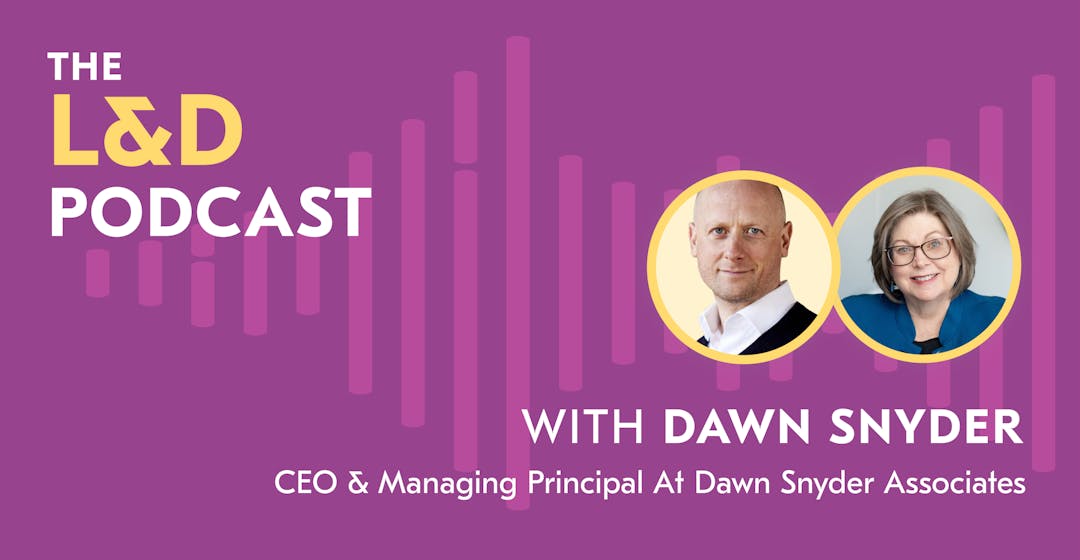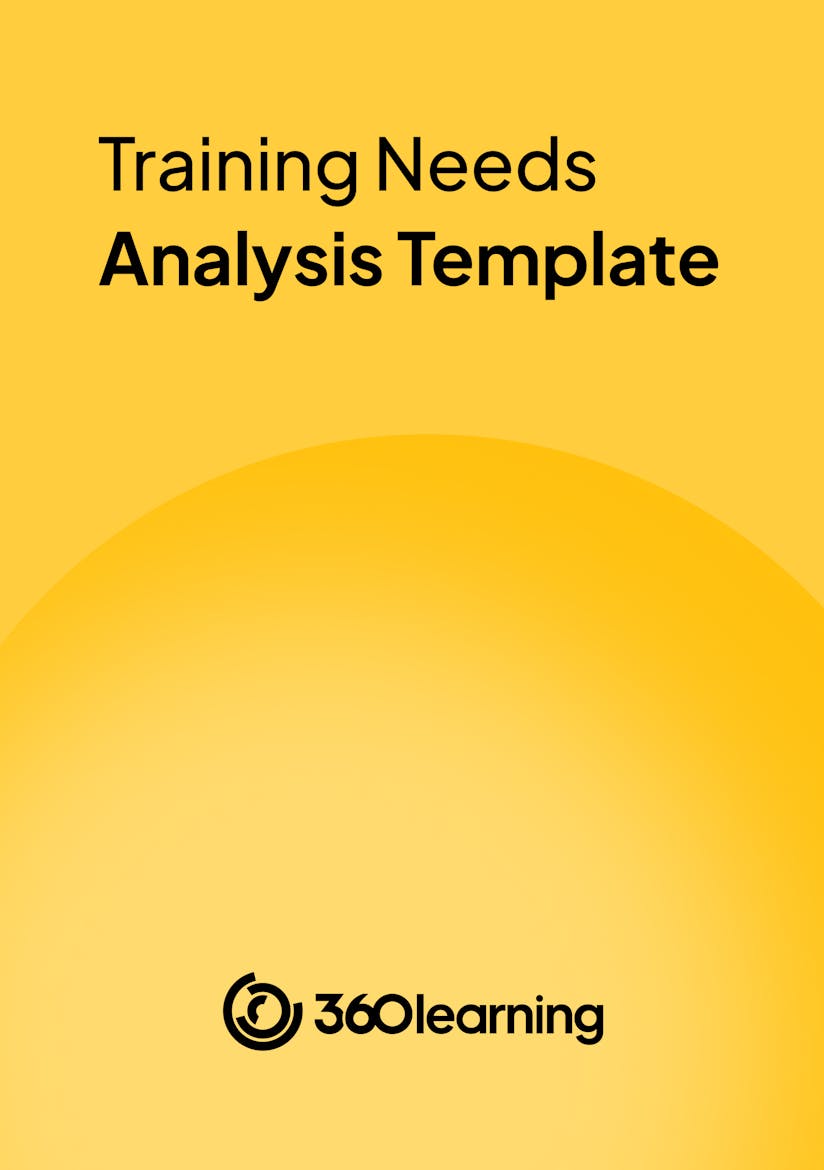
Driving Faster Learning with the Right Performance Approach: An Expert Interview with Dawn Snyder
Traditionally, L&D teams have relied on course completion and participation rates as a way to measure success. While these metrics are useful, they don’t measure employee performance. After all, what good is employee training if learners can’t take what they’ve learned and apply it to their job, as a result improving their performance?
While most L&D leaders understand the importance of measuring performance, many are still struggling to make the shift. That’s why I’ve joined forces with Guy Wallace, performance orientation expert, as we interview L&D thought leaders who focus on performance.
This week, we speak to Dawn Snyder, go-to consultant for organizations looking to make an impact on global learning and performance. Dawn has helped leading companies take their performance to the next level, so it was fantastic to get her take on the best approach to do this.
Dawn, Guy, and I discuss how not all L&D programs have a direct impact on performance, how Dawn’s performance approach uses a toolkit of research strategies to focus on the task at hand, and how you can use Dawn’s mindset to design training programs that achieve measurable results in performance.
Not all L&D programs have a direct impact on job performance
Going into instructional design with the desire to have an impact, Dawn became very interested in helping people to apply the skills and capabilities taught in the classroom to their day-to-day jobs.
To do that, Dawn says, “I had to learn how to measure what was happening on the job. Because I developed that skill set, I ended up doing a lot of work in that space.”
Through developing that measuring skill set, Dawn was then invited by clients and colleagues to join them on projects where they would evaluate the impact they were having. In an eye-opening moment, she discovered that a lot of what they were doing in the learning ‘space’ wasn’t having a meaningful impact on performance.
However, because Dawn had extensive experience in measurement, she reevaluated what did make a difference and has since only approached her work from a performance–rather than just a learning–mindset. “I would say the secret to my success today is that I approach all of my work through a performance mindset,” she says.
Read on to hear more about Dawn’s secret to faster learning.
I would say the secret to my success today is that I approach all of my work through a performance mindset.
What analysis is required to impact performance?
As Dawn explains, “The key to being successful in impacting performance is to have a toolkit of research strategies that help you focus on the problem at hand.”
Dawn starts by focusing on the results expected by the organization or department. She identifies Gap Analysis and Cause Analysis as the two main approaches that distinguish a performance approach in L&D.
1. Gap Analysis: Identify the gaps between the desired level of performance and subsequent results. Ask where there are deficiencies or opportunities the organization has an interest in addressing.
“Once you identify and understand what these gaps are,” says Dawn, “you're able to look at something that can be addressed with a learning intervention.”
2. Cause Analysis: Explore what type of deficit is causing or contributing to the problem.
Start with looking at business data and what the organization uses to measure effective performance and output.
By pairing the Gap Analysis and the Cause Analysis, Dawn’s experience is that they understand what they need to take action. “It's a problem-solving approach,” she says. “You're filling in the outside of a puzzle and then determining what you need to know to fill out the inside.”
Dawn went on to explain the specifics of that data and the kinds of measures she typically looks at to define the organization’s desired state of performance.
To find out more about how to improve performance by conducting a training needs analysis, check out our article: UK L&D: 6 Steps to a Great Training Needs Analysis (+ Free Template)

Simplify your training needs analysis with our free template
By providing your contact info, you agree to receive communications from 360Learning. You can opt-out at any time. For details, refer to our Privacy Policy.
How to measure the real impact of learning
In Dawn’s experience, the kinds of measures and data you’re trying to define when impacting performance depend on the organization. “If an organization comes to me,” explains Dawn, “and says ‘our group is not able to sell this product to this market’, then I would like to look at any data they have that informs that performance.”
In this example, Dawn recommends analyzing the information the organization uses to record success and failure such as current and past sales data. Looking at the data, she asks: what is the difference between low-performing and high-performing salespeople?
From there, she says, you compare all of their data and through interviews or other interventions. You can understand the behavior or accomplishments that the high performers are focusing on that distinguishes their ability to get organizational results from low performers.
“I would also be looking for information from individuals,” says Dawn, “and any other data about what kind of barriers they're experiencing. Have they been given good expectations and feedback? Do they have the tools they need to do their job? Are they incentivized to do that?”
Why topic-centric L&D doesn’t work
When describing an example of applying her performance approach to a new starter training program, Dawn says L&D teams often forget to focus on the real point of need. “L&D often designs training programs for the convenience of the people who implement them, and not for those who are meant to benefit from them.”
In Dawn’s experience, these programs are not designed to prepare people for what they are actually expected to do. That’s why she found another way. “We reverse engineered all the practices and content to be geared towards preparing the new hires to do those things that they had to do on the job and the practice mimicked exactly what they did on the job.”
This way, says Dawn, everything in the training was focused on getting the impact on the job. So by doing the right analysis first, she was able to incorporate the link between intervention and transfer of learnings to enhance performance.
L&D teams often design training programs for the convenience of the people who implement them, and not for those who are meant to benefit from them.
Focus on performance for faster, more effective L&D
Through this performance-based approach, Dawn significantly reduced the time of ramping up new starters by focusing on learning impact.
“When we first ran this new curriculum,” Dawn says, “not only did we reduce it from nine weeks to five as requested, but in the last few days the new hires were in a supported environment and taking actual calls from customers with a coach that was easily available to them to make sure that the customers didn't suffer.”
With Dawn’s performance approach, the new hires were able to save the company $3 million, exceeding what the experienced group was able to achieve. “That was a result of the environment because that was one of the organizational measures we needed to focus on. And therefore, everything in the training was focused on getting that impact on the job.”
That was a result of the environment because that was one of the organizational measures we needed to focus on. And therefore, everything in the training was focused on getting that impact on the job.
Thanks again to Dawn Snyder for speaking to us about her successful experiences in impacting performance! Keen to hear more about actionable and insightful L&D stories? Explore my session with Guy Wallace on how L&D teams can pivot from learning to performance.
Want more peer insights on transforming workplace learning? Sign up to become a member of the L&D Collective, and check out our other #CLOConnect interviews with top L&D leaders on driving growth and scaling culture through Collaborative Learning. Or you can subscribe (below 👇) to our weekly newsletter to receive our latest posts directly in your inbox.

